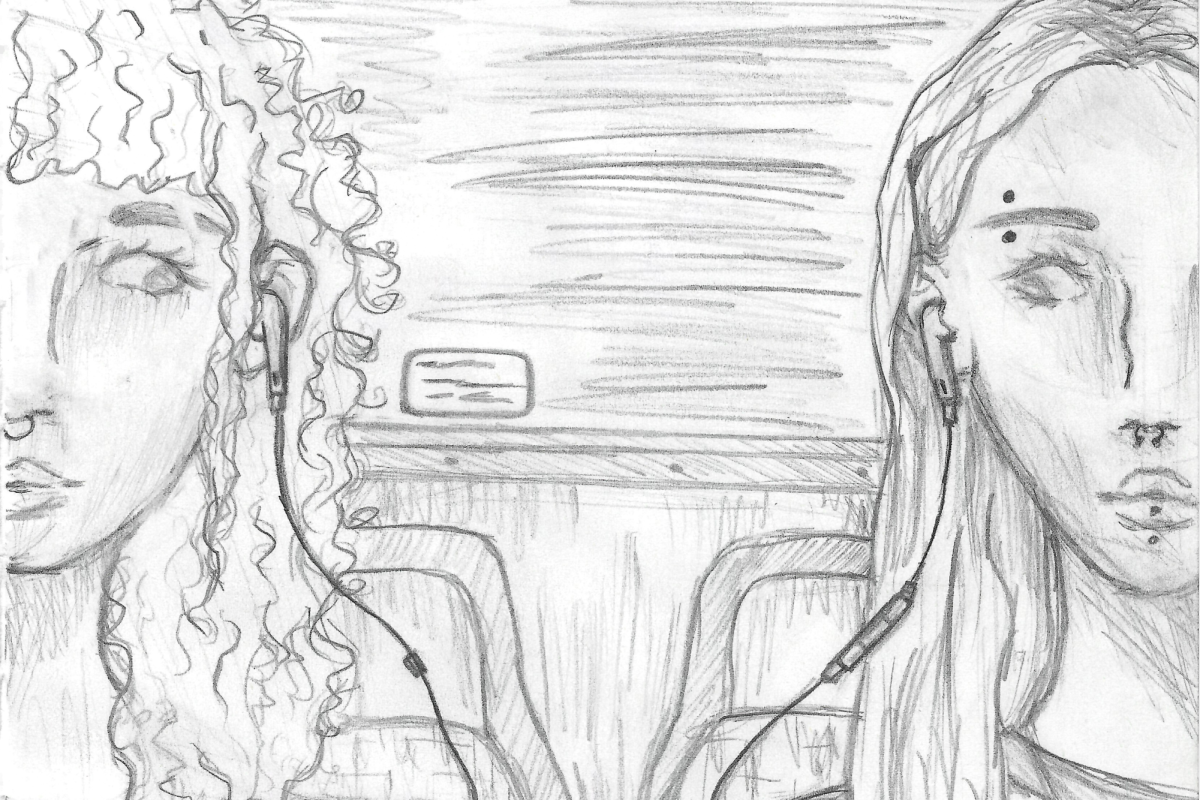It’s not uncommon to hear phrases like “I’m so OCD about that” being used at South, seemingly without any effects. Even when not speaking maliciously, however, speaking carelessly can hurt people suffering from mental illness.
“You can be understanding and still be hurtful, just accidently … terms are used broadly, without intention, so it’s hurtful, but it’s hard to tell who it’s hurting,” said Jane, a student with depression who asked to remain anonymous. When a term that is meant to be used for a diagnosis is used informally, especially with a negative connotation, it may be hard to pick out one person who is being hurt. It may not even be apparent that it has been harmful at all.
At South, as in the general population, mental disorders are very common. The National Institute for Mental Health estimates that 1 in 4 people will be diagnosed with or treated for some form of mental disorder within a given year. Despite this prevalence, many students are intimidated by the idea of being open about it. “Mine doesn’t show very much, but I’m worried if I show it people will think less of me,” said Susan, not her real name, who has Generalized Anxiety Disorder (GAD).
Some stigma stems from mental disorders being seen differently from physical ones. Jane said, “it’s [not like] diabetes, which you can’t help. When it’s a problem with a personality [people] can’t see the pathology.” This means that the symptoms and behaviors that are connected to mental disorders are separated from their medical cause. There are other types of disorders that go unnoticed as well, Sarah, not her real name, said of having the neurological disorder epilepsy. She says that the majority of people she knows at school do not know about it.
The casual use of diagnosis terms can be personally offensive to those whom they apply to. “It seems juvenile, insensitive, and ignorant,” Jane said. When a term is being used to describe a behavior, like OCD for a tendency towards neatness or anorexia for a preference against eating breakfast, it often doesn’t fit into a diagnosed disorder. The described tendency would have a much more profound effect on the life of a diagnosed person. Even if someone is offended by language, they may not confront the person using it, fearing that the attention would be focused on them.
Using a disorder as a negative adjective in a context completely separate from an affected person depersonalizes the idea of the disorder, and disassociates it from normality. It seems that anyone can ‘be OCD’ and this makes it hard to comprehend that real people have it. Also, by associating the idea of these disorders only with strange behaviors, they seem mutually exclusive with being an ordinary functional person. This is alienating for people who have disorders. “You feel like no one can relate to you … like you’re messed up or crazy,” Susan said.
The media often seems to under-emphasize the severity of mental disorders, perpetuating the idea that terms can be used outside of their actual meaning. Susan said that she has seen GAD, or anxiety problems in general, being shown as “a joke illness that shouldn’t count.” On The Tonight Show, Jennifer Lawrence talked to Jesse Eisenberg, who has OCD, about “wanting weird quirks,” and what an “interesting person” he is. Diminishing a disorder in this manner, reducing it to quirks and sanitizing to remove the difficulties that come along with it, is harmful. An illness not being taken seriously can have serious consequences, with the potential to stall treatment, or make someone feel that their concerns are illegitimate.
The recent Connecticut shooting has prompted discussion of mental illness. Although it is possible that other disorders had gone untreated, the shooter has only been identified as having Autism Spectrum Disorder. This is a developmental disability, not a mental illness, and is unrelated to violent behavior. Speculation has largely villainized mental illness, showing a skewed perspective and focusing on extreme symptoms rather than the majority of people who have them.
This shows a depersonalization of mental illness, viewing it as a problem rather than a pathological disorder. The examples of the shooting and interview are on opposite ends of the spectrum, one portraying mental disorders in a very negative way and the other in an almost positive one. Both show a lack of personal connection with the subject of mental disorders, which leads to inaccurate judgements and extreme or polarized views.
Using diagnosis terms casually is the most visible sign of a societal trend of harmful attitudes towards mental disorders and people affected by them. Students at South have the opportunity to take action against these attitudes by using diagnosis terms to refer to the disorders they are meant to define, not tangentially related behaviors. This would be a major step towards a changed attitude towards mental disorders that will have much more positive effects.







